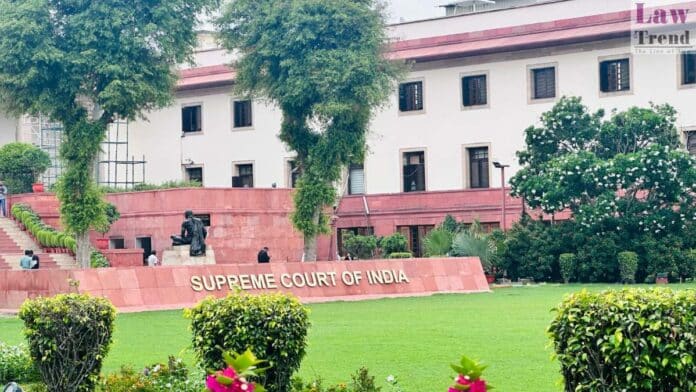In a significant ruling with far-reaching environmental and legal implications, the Supreme Court on Thursday declared Maharashtra’s Zudpi Jungle lands—primarily located in the eastern Vidarbha region—as forest lands in accordance with its landmark 1996 judgment that defined the term “forest.” However, the court has protected long-standing public infrastructure and residential structures already built on these lands prior to the cut-off date of December 12, 1996.
A bench comprising Chief Justice B R Gavai and Justice Augustine George Masih emphasized the need to balance environmental protection with sustainable development. The court noted that while “Zudpi Jungle” lands—translated from Marathi as lands with bushy growth—may be of inferior quality, they nonetheless fall under the forest category for legal and conservation purposes.
Longstanding Structures to Stay
Acknowledging that schools, public health centres, roads, irrigation projects, and even high court buildings in cities like Nagpur were constructed on such lands, the bench granted protection to these establishments. It clarified that the protection applies only to those structures built before the court’s 1996 judgment and warned that this exception should not be treated as a precedent.
“The question that we will also have to answer is whether the citizens should be deprived of all these facilities on account of some bureaucratic mess… The answer to all these questions will have to be in the negative,” the bench observed, citing the decades-long presence of essential infrastructure on these lands.
Restrictions on Use for Afforestation
The court ruled that Zudpi Jungle lands cannot be used for compensatory afforestation unless the state’s Chief Secretary certifies that no other non-forest land is available for the purpose. Even in such cases, afforestation must be carried out on double the area as per the guidelines of the Ministry of Environment, Forest and Climate Change.
Approval Mandatory for Land Use Diversion
Going forward, any proposal to divert Zudpi Jungle land for non-forest purposes must receive prior approval under the Forest (Conservation) Act, 1980. For post-1996 allotments, the state must submit justifications along with the names of officers involved in violation of the apex court’s earlier ruling.
Proposals will be processed by the central government only after confirming punitive action has been taken against the responsible officials.
Encroachments and Enforcement
To prevent further misuse and encroachments, the bench directed the Maharashtra government to form a district-level task force in each affected district, comprising a Sub-Divisional Magistrate (SDM), a Deputy Superintendent of Police, an Assistant Conservator of Forests, and a Taluka Land Revenue Inspector. This task force has been given two years to remove encroachments.
Furthermore, the state’s revenue department has been ordered to hand over the remaining 7,76,767 hectares of Zudpi Jungle land to the forest department.
Inter-Governmental Coordination
The court also mandated that within three months, Maharashtra and the Centre must engage in consultations—under the oversight of the Central Empowered Committee—to decide on the diversion of Zudpi Jungle lands for non-forest uses.
Conclusion
This judgment underscores the Supreme Court’s continued commitment to forest conservation while also recognizing the practical realities of urban development. By providing safeguards for existing public structures and tightening the criteria for future land use, the ruling strikes a delicate balance between environmental protection and civic infrastructure needs.







